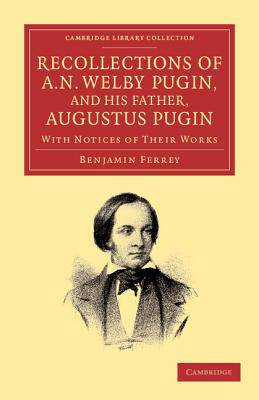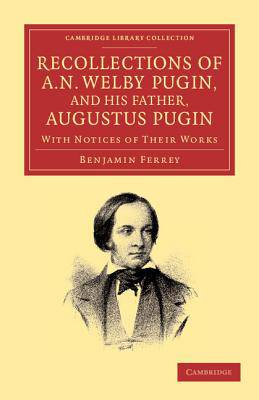
- Afhalen na 1 uur in een winkel met voorraad
- Gratis thuislevering in België vanaf € 30
- Ruim aanbod met 7 miljoen producten
- Afhalen na 1 uur in een winkel met voorraad
- Gratis thuislevering in België vanaf € 30
- Ruim aanbod met 7 miljoen producten
Zoeken
Recollections of A. N. Welby Pugin, and His Father, Augustus Pugin
With Notices of Their Works
Benjamin Ferrey
€ 95,45
+ 190 punten
Omschrijving
The architect and designer Augustus Welby Pugin (1812-52), whose early commissions included furniture for George IV at Windsor, assured his place in history through his work with Sir Charles Barry on the Palace of Westminster following the 1834 fire. A pivotal figure in Britain's Gothic Revival, he became a Roman Catholic in 1835, combining his religion with his devotion to the medieval in building projects such as Nottingham Cathedral, St George's Cathedral in Southwark, and Mount St Bernard Abbey in Leicestershire. Benjamin Ferrey (1810-80) studied architectural draughtsmanship under Augustus Charles Pugin (1762-1832). Boarding with the Pugins for seven years, he gained first-hand knowledge of father and son. This 1861 work is a lasting achievement in architectural biography. It includes a substantial appendix by Edmund Sheridan Purcell, a family friend whose own Catholicism equipped him to discuss the religious aspects of the younger Pugin's character and work.
Specificaties
Betrokkenen
- Auteur(s):
- Uitgeverij:
Inhoud
- Aantal bladzijden:
- 512
- Taal:
- Engels
- Reeks:
Eigenschappen
- Productcode (EAN):
- 9781108064576
- Verschijningsdatum:
- 27/06/2013
- Uitvoering:
- Paperback
- Formaat:
- Trade paperback (VS)
- Afmetingen:
- 140 mm x 216 mm
- Gewicht:
- 644 g

Alleen bij Standaard Boekhandel
+ 190 punten op je klantenkaart van Standaard Boekhandel
Beoordelingen
We publiceren alleen reviews die voldoen aan de voorwaarden voor reviews. Bekijk onze voorwaarden voor reviews.











